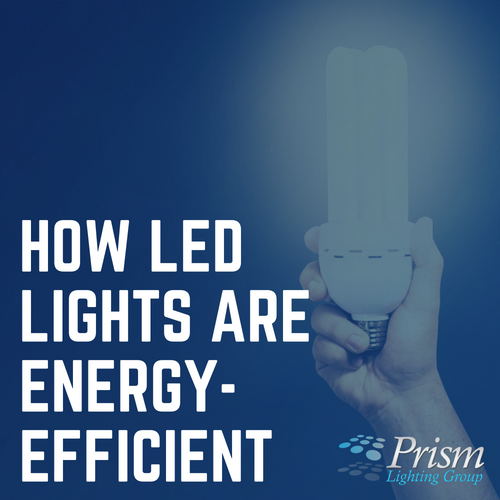- Exhibit Lighting
- Prism Original Series
- Lovo™ Edge Series
- LED Display Arm Lights
- LED Light Stands
- LED Flexible Strip Lighting
- LED Light Panels & Signage
- LED Down Lights
- High Bay LED Lighting
- LED Rigid Strip Lights
- LED Aluminium and Silcone Profile Extrusion
- Connectors & Cabling
- LED Accessories
- LED Controllers
- DMX LED Lighting
- MADRIX Lighting Control
- Programmable Lighting
- LED Lamps
- Power Supplies
- Battery Solutions
- Clearance
- More Lighting Options
- Commercial Lighting
- Retail Lighting
- Lovo™ LED Series
- What We Do
- Who We Are
- Resources

How LED Lights are Energy-Efficient
Monday, June 18th, 2018
LED Lighting can be used to save energy, help protect the environment, and reduce maintenance costs. Plus, make products, graphics, and much more look more attractive than traditional lighting! Not only are led lighting energy efficient, they can last much longer than traditional lighting. Here’s how LED lights are energy-efficient:
Save Energy
LED lighting can save up to 85 percent of the electricity used by incandescent bulbs and up to 50 percent of electricity used by fluorescents. When comparing LED lighting to fluorescent lights, energy savings depend on the type of fluorescent light. For example, LED lighting can save up to 50 percent of the energy used by CFLs and between 20 to 30 percent of the energy used by fluorescent tube lighting. This transfer to your energy bill. LED Lights are more efficient at converting electricity into light than traditional halogen bulbs. You get more light output per watt and a reduced electrical bill.
Reduced Maintenance
You’ll often find LED Lights used in areas where lights are switched on for an extended period of time such as corporate offices, retail environments and residential homes. Since LED lights are so energy-efficient, the most common applications are places where lights are switched on for an extended period of time. You can find LED lights in restaurants, offices, parking lots, streetlights, trade show exhibits, retail chains, dorm rooms, ice skating rinks and, of course, in homes. The labor cost alone to replace halogen/incandescent or fluorescent in comparison to LED is expensive. When you install an LED light once, you don’t have to worry about it for 15-20yrs (under normal use). In comparison, you would be changing many lamps and fixtures with traditional lighting over that same timeline.
If that does not convinces you about how much LED lighting can really save energy money, just take a look at the statistics. The U.S. Department of Energy estimates that by 2025 the widespread adoption of LED lighting will produce the following:
- 62% reduction in electricity demands from lighting.
- 258 million metric tons of carbon emissions eliminated.
- The number of materials being put into landfills will reduce.
- Avoid the building of 133 new power plants.
- Over $280 billion saved in the US.
Longevity
LED lighting is better than incandescent bulbs since LEDs consume significantly less energy and don’t emit as much as heat. Most of the energy emitted from incandescent bulbs is converted to heat instead of light. That’s why you’ll burn yourself if you try to touch an incandescent bulb once it’s turned on.* This is also the reason for the short life with halogen/incandescent lamps, the heat breaks down the filament causing the light to burn out up to to 10 times faster than an LED light. When comparing to Fluorescent or CFL, typically a much shorter lifespan then LED lamps, with a CFL bulb the design of this lamp has played a role in the life of this lamp, some lamps not even lasting a year.
Eco-Friendly
LED lights help protect the environment since LEDs don’t contain hazardous materials, such as mercury. Since fluorescent tubes and CFLs contain mercury, they must be properly disposed of in order to prevent mercury from poisoning landfills. LED lights are also designed to last about 50 times longer, which means less ladder-climbing maintenance and less waste.
Now that you know how energy-efficient LED lights are, it’s time to make the switch from halogen or fluorescent!
Have a Lighting Challenge? We can help you find a solution. Talk to a lighting expert today to discuss your project.
*We do not recommend touching lights to see if they are hot or not. Instead, watch this chocolate bunny demonstrate the heat difference between incandescent and LED lights. https://www.youtube.com/watch?v=LyVU470TQBk

